Media | Articles
Will modern cars, and modern materials, age gracefully?
When we drive our cars, they collect signs of that use—patina, in collector-car speak. The latest issue of Hagerty Drivers Club magazine, in which this article first appeared, explores the delight found in such imperfect cars. To get all this wonder sent to your home, sign up for the club at this link. To read about everything patina online, click here.
***
Hagerty Drivers Club magazine sat down with member Richard Vaughan, a designer who has 30 years of experience in a variety of automotive product development roles at Ford Motor Company, General Motors, and Rivian, to ponder the question: Will Radwood-era (post-1980) cars develop patina?
Vaughan, a graduate of Detroit’s College for Creative Studies and a lifelong car enthusiast, has written six books on Rolls-Royce, Bentley, and Aston Martin and has been a concours organizer and judge for decades. He currently serves on the Advisory Team for the Detroit Concours as well as on the board of directors of the Rolls-Royce Foundation Museum and the Rolls-Royce Owners’ Club.

Hagerty: Tell us what you think patina means in the classic car hobby.
Vaughan: Patina means worn in as opposed to worn out. It’s like if you buy a Ralph Lauren leather club chair, and over the years it becomes worn in and it looks like you’ve enjoyed it, but it’s still beautiful. That’s different from being worn out. Worn out looks like something you need to throw away and replace.
Cars made before the ’80s have several sensory cues that communicate that they’re worn in: smell, touch, feel. For the interior, leather, fabric, carpet, and wood are probably the four primary materials that create these sensory perceptions. On the exterior, it’s metal and chrome. Acrylic lacquer paint was commonplace from the immediate postwar era through the ’70s. Cars had a lot of paint, and it wasn’t quite as glossy as modern paints. When you polish and polish acrylic lacquer over the years, it gets thinner and thinner, and you get those beautiful areas where you can see that someone has maybe polished through the paint a little bit. It has what I would call a luster. That changes the more you polish it, and the cars can take on a really lovely look of being worn. You can tell somebody’s loved it and they use it.
Radwood cars don’t have it?
Vaughan: You can’t get that patina because the technology just doesn’t allow it. Radwood cars all have urethane, or polyurethane, paint finishes, which is a two-stage paint: base coat, clear coat. When the clear coat fails, it starts peeling off and looks like crap. It never looks worn in; instead, it looks great until it looks bad. You’ll see the paint peeling off the clear coat in sheets.
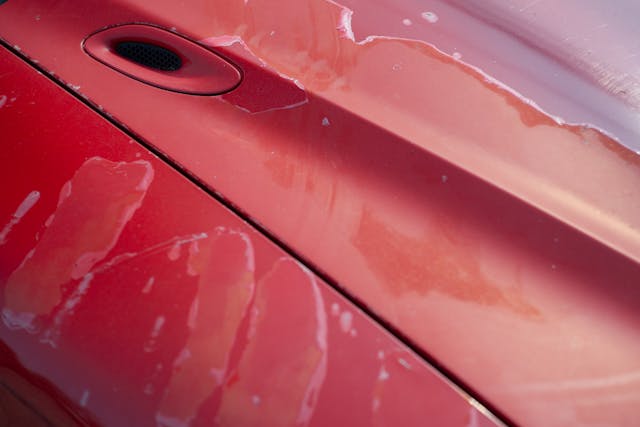
How will exterior plastic trim age?
Vaughan: Plastics for urethane bumpers and that kind of thing often are painted, but the black-molded-in-color plastics just turn gray and look awful and then you’re trying to put Armor All on it. I mean, if you ever see an old Pontiac Aztek or Chevy Avalanche where half the car is covered in that cladding and it’s really faded—you see these little, like, lines? That’s the mold flow of the liquid plastic as it enters the injection molding tool.
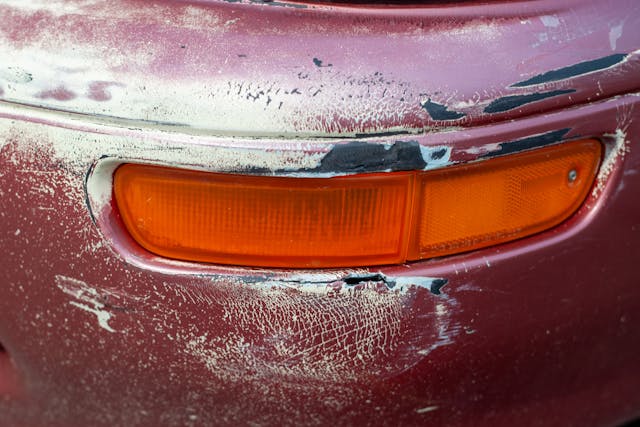
Are there any remedies?
Vaughan: The idea that you could preserve it and it’ll look like it has patina? That is not going to happen. To make the car look good, you’d have to paint the parts, which is kind of weird, as it’s a deviation from the original, but you could paint with a matte finish; it doesn’t have to be a glossy paint. But then it’s not original patina; it’s something else.

So, exterior plastics will not have patina as we know and appreciate patina?
Vaughan: It would be a compromise thing. In the ’80s and into the ’90s carmakers, especially of mass-market cars—this doesn’t apply to a Ferrari or a Bentley—but cars like a Corvette or a Pontiac 6000 STE—they use a lot of PVC—polyvinyl chloride—and a lot of polypropylene, which is the hard material that turns brittle and breaks. In the ’80s, most of that polypropylene, or PP as we call it in the industry, was painted. If you had a beige interior, they would mold the plastics in beige and they would also be painted beige. And, so, two things can happen. You can have the paint starting to separate from, or delaminate from, the substrate, or you can have the plastics getting so brittle that they break and are not repairable. When you’re shopping for a used car from that era, you have to ask: What was the climate where that car lived? If the car came from Texas, every time you take a plastic part off the car, you might as well be sure you have a replacement when you need to put it back on. A car from a place like Seattle where it’s not incredibly hot and there’s not a lot of UV damage, because there’s a lot of cloud cover, might be OK. But eventually time will get all these polypropylene parts.
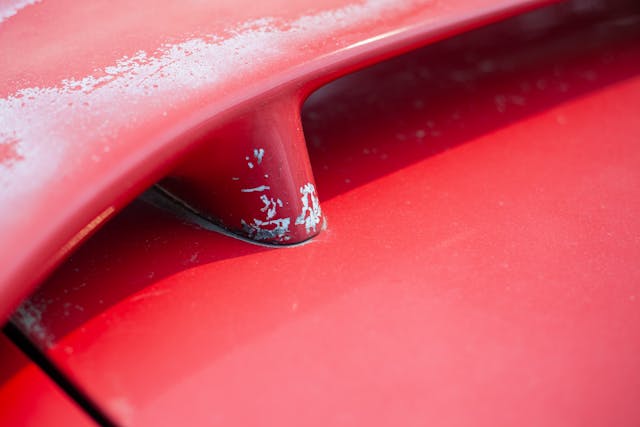
Is it possible that 25 years from now we collectively might decide that it’s charming when those 1990s plastics turn gray?
Vaughan: I’ve been wrong about a lot of things in life, but I don’t think anybody will value that.
Does that mean that in 2050 we will clearly know the difference between a patina-era and a non-patina-era car?
Vaughan: A lot of it will depend on the car. There may be within a certain car community an appreciation for some aspect of the degradation of the materials, like we do today for cars in the ’50s and ’60s that are original. But it’s going to depend on how those materials were used in a particular vehicle.
Here’s another example: leather, which people value a lot, but which has changed and evolved. If you look at a car from the ’60s or ’70s and into the ’80s, leather seating was literally leather sewn together, which can be repaired. And if it’s a really nice car with a thick hide properly dyed rather than simply sprayed with a topcoat of color, you can get a beautiful patina as the leather wears in and you start to see some of the layers of the material. These leathers didn’t have coatings to prevent moisture from getting in. So you could put a cream on the leather, what we call “hide food.”
But in the ’90s, car companies started laminating the leather to protect it and add softness. The leather is laminated to a foam scrim, or backing, to provide some initial softness when you touch the material. But over time, the foam backing starts to break down and de-laminate. And then the leather seat looks like a sleeping bag. Look at, say, a 2007 Aston Martin V8 Vantage or DB9 or an ’07 Bentley Azure convertible. You peer into the interior and you say: My goodness, these seats look terrible, loose and baggy. It’s because the foam has de-laminated and turned to dust. It’s common across most premium automakers—I have this conversation all the time with the Rolls-Royce community.
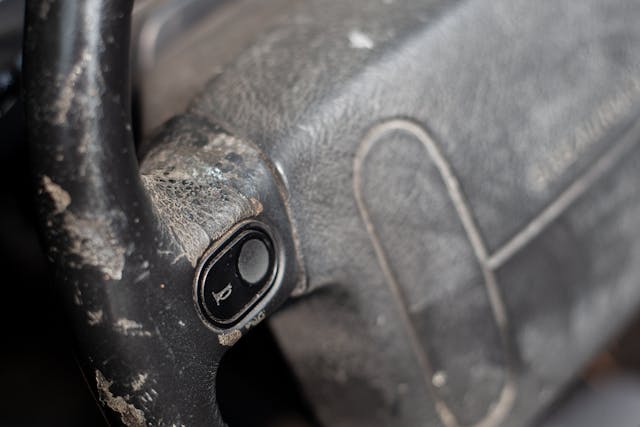
What if that coated leather cracks?
Vaughan: Putting hide food on modern leathers is a waste of time and money because the coatings are designed to prevent, to repel, absorption.
The leather that we of a certain generation loved because of the way it looked, felt, and smelled, and its incredible durability? That traditional material is not considered to have a premium haptic anymore. Today’s luxury buyer would find it to be too hard and firm to the touch. That all changed due to the consumer desire for this sensory perception. It’s also worth pointing out that the cost of leather is very high in more than mere dollars. Leather is extremely heavy.
Foam lamination is also used for vinyl. When we say vinyl, what we usually mean in the car industry is a PVC-coated cloth. And when you talk about synthetic leather that you might find in a modern upscale car like a Lucid or Rivian, that typically is polyurethane. In the business, we would always call that “PU” or “PUR” for polyurethane. And the technical term for these treatments, by the way, is polymeric films.
If we say vinyl, that’s internally [inside car companies and suppliers], because we know that the consumer doesn’t like that word, so we don’t use the word vinyl if we’re talking about the higher-end product that’s polyurethane-based, even though it is indeed just vinyl.
Everybody would consider it vinyl, but the industry often draws a distinction between PVC vinyl and PUR by calling PUR “vegan leather”—but they’re both just petroleum-based polymeric films. The main difference is that the PUR feels more like leather.
None of these plasticized interior materials is going to age well?
Vaughan: Well, that’s one benefit of PVC. It looks good and lasts forever. Everybody’s heard of MB-Tex. You can see a 50-year-old Mercedes and the seats look brand new.
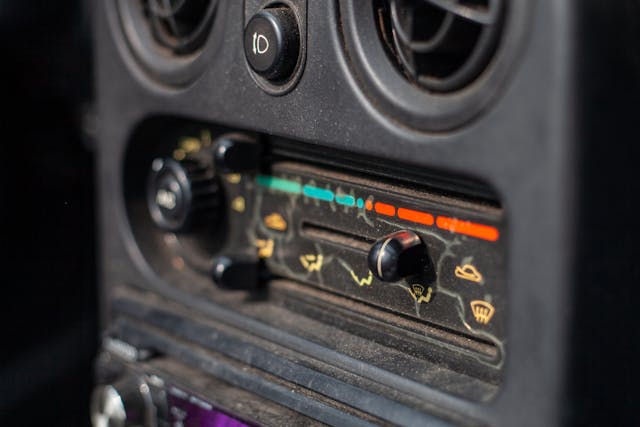
Is PVC vinyl a candidate for patina?
Vaughan: No. Patina implies that it has a worn look. This stuff just doesn’t wear; it can last a very, very long time. Now, of course, like everything, there are really cheap versions where you can wear off the topcoat. But, you know, a car that has a really nice PVC vinyl will keep a new look or good condition look for an extremely long time.
You mentioned Corvette earlier. If we’re talking C4 through C8 Corvettes, in 2050, will there be aftermarket replacements for both interior and exterior plastics?
Vaughan: I think the cost of injection-molding tooling is lower and lower all the time, and 3D printing will allow people to replace parts that would have otherwise not been available. But these are going to be like-new spec. There’s no way in 2050 to make a C7 Corvette have patina as we currently perceive patina.
So, back to our earlier thesis, patina may die after 1980 …
Vaughan: I think your thesis is accurate.

***
Marketplace
Buy and sell classics with confidence
Check out the Hagerty Media homepage so you don’t miss a single story, or better yet, bookmark it. To get our best stories delivered right to your inbox, subscribe to our newsletters.
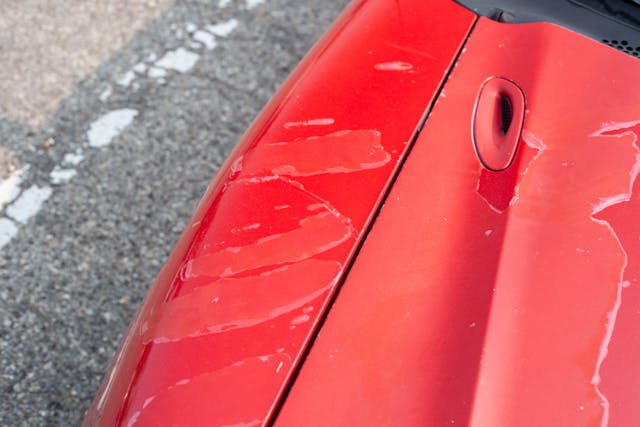


















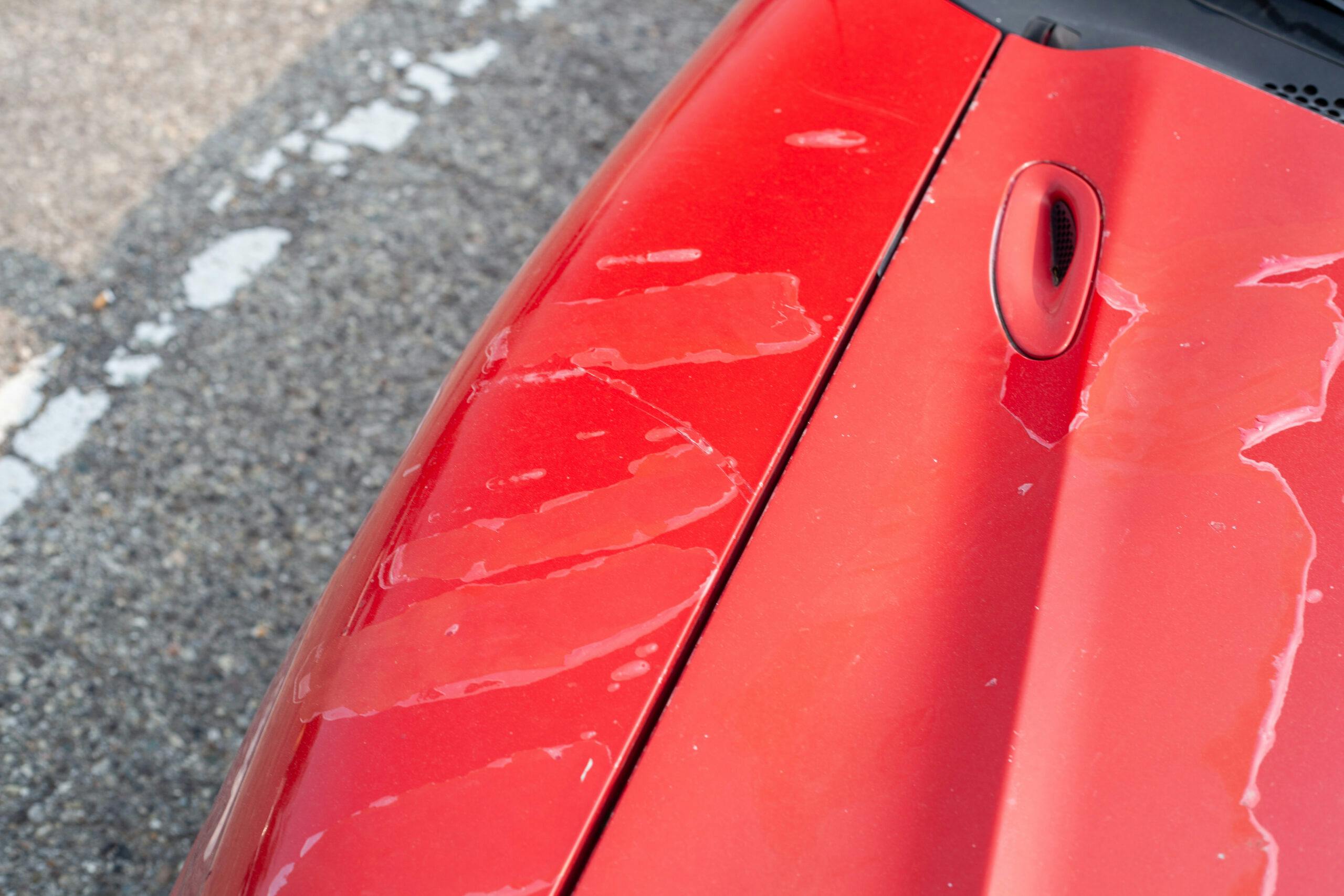
You don’t have to worry about any obd1 or obd2 cars running around 20 years from now. You won’t be able to get power train electrical parts. Sensors and modules there are just too many of them. Unlike years ago they change year to year. Like European cars always were you can’t get American dealer parts without a vin number because they don’t know what part was used from what or where. I’m in the business 53 years. Right now I have a 2006 Wrangler that needs a front driveshaft. There 6 possible numbers. It doesn’t matter anyhow. According to Chrysler they are all obsolete. This particular model uses a 1/2 a half a year driveshaft. I finally found one at a dealer in Wisconsin. I’m in NY. Hours on the internet. Case closed.
Let’s remember that even when new plastics looked bad.
Back in the ’70s you’d see plastic bits on most GM products which did not match the paint color.
The matches were a shade or two off.
From Cadillac on down….but usually worse on higher end cars because they had more of the stuff.
I would wager that VIP cars for shows, films and brochures with had the plastics repainted or there was something done in printing.
A couple of years ago, I was on assignment at Barrett Jackson Scottsdale and inspected a couple of no mile GNXs. The fender to bumper trim on both were terrible…warped, cracked and generally not worth keeping.
I suggest that designers and auto execs be forced to drive a three year old car for a couple of years to see what buyers have to put up with…cars that look terrible before they are paid off.
@JohnB- Very good points. The first C4 I ever sat in was a brand new 1990 ZR-1 in a showroom. I was amazed to see such cheap-looking plastic in a $68,000 car (1990!) that was probably going to be marked up to $100,000.
I just used some 00 steel wool on the stainless steel trim on my 67 Mustang, looks brand new. Vinyl interior looks great, a lot better than the leather seats on a newer 4-5 year old car today. I liked the vinyl interiors of the 60’s & 70’s. I have a 52 & 61 mg that still had some of their original leather, now that was leather! Today to much plastic, it’s really only made to snap in place once after that you’re on borrowed time. The dashboard cover on my newer vehicles I don’t know what they are made of but are really hard to wipe down/clean I have to use cloth that doesn’t leave lint, can’t use paper towels.
I agree that failed electronics will be the bane of modern cars as they age. A touch screen will not last, and if it’s a popular car you may be able to replace it. Maybe. There is so much complexity in transmissions, for example- sensors, solenoids, circuit boards. Even now it is hard to diagnose a transmission issue; a ten-speed transmission that starts to malfunction could be a number of things, some of which require dismantling the unit. Reasonable cars are being scrapped because it is so expensive to repair them, and the interconnectivity makes substituting parts difficult. My daily driver 90 Mustang has a reasonable computer that did not care that I put in a five-speed in place of my automatic that was failing (and it was much more fun), but imagine the same on a 2020 Mustang. Even without emissions inspections it would probably have a kitten if it did not have the proper signals from the tranny. Cars are getting less repairable and certainly less restorable every year. More like appliances now.
I don’t believe patina is just a current fad. It’s been around since before we even had automobiles. Think of an old wooden mixing bowl your great grandmother used, and how you cherish the aging process that has taken place…and stood the test of time. As implied in the article, it’s an indication that something of quality has stood the test of time and provided good service to the user.
I have a Carhartt canvass work coat that is probably 40 years old. It is worn, but soft and pliable, unlike a new stiff coat. My wife probably thinks it’s time to get rid of it, but I love that coat…
I think the context here is how the patina term is being applied in automobiles and the current fad of desiring that look. Patina in the automotive conext is a fad because it was quick to rise in popularity and there are many past fads in the automotive world. Fads are a reflection of the generation from which they arise.
Miata Steering wheel, and climate control panel, yup both are awful. I replaced the wheel, the new climate control faceplate kit is in the trunk.
Patina is currently overrated, anyway. Realistically, how many had even heard of it 15 years ago?
15 years ago?….try the 17th century.
When Italians began using patina in the 17th century to refer to the green film that forms on the surface of copper, they were drawing on Latin, in which patina means “a shallow dish.” (Presumably, the Italian meaning developed from the observation of such film forming on copper dishes.) By the mid-18th century, English speakers were also calling the green film patina, and by the 20th century, they’d expanded the word’s application to surface appearances of things that have grown more beautiful with age or use—think of an old wooden desk or a tarnished silver goblet.
Well put Rick! It’s what has always made antiques attractive. As far as patina in the more modern side of automobiles it will still be patina by definition but most likely won’t be attractive.
‘Patina’ is just rusty faded garbage. Honest wear is OK until it gets too bad. Disintegrating plastics and impossible to find or fix electronics will mean the end of many cars unless you can adapt something old or new to it. Those ‘will it run’ videos where a car sitting in a field for 50 years fires up with minimal work will not be happening for cars built in the last 30 years.
My daily driver ’90 245 is still beautiful – after I replaced the sun-burned Park, Tail, and headlights. On the other hand, my wife’s ’65 Volvo 220 just needed the plastic lenses buffed and the glass head wiped off.
I really enjoyed this article and as a “car guy” have a lot of respect for the older-unrefinished rigs I see at shows. My older Mustang underwent a rebuild/repaint several years ago so I’ll probably never see the patina on it. But as a 50’s product myself – at least I’ll age better than those born in the eighties and later. My wife always tell me -as a man my age – I’m doing quite well…….
Becauth puhteeeenuh 🤦♂️
Uggghhhh…
Plastic deteriorates and eventually destroys itself by crumbling. Those parts exposed to the sun will deteriorate fastest and need to be protected. BUT, the problem will not be hard parts and rather will be computers. Those will be a technology that will be most difficult to continue to produce and the hardest to repair.
I have a 1984 911 that I have owned since day 1 and its computer is extremely simple and there are no modern plastics to crumble. Almost every 2020+ car will be extremely difficult to continue to have on the road for the same 40 years in the future that my 911 continues to exist. From the muscle cars to the end of the analogue cars, those machines will continue to exist long into the future. Your modern classic will turn to dust.
Why would anyone buy, keep, or admire a Tesla?
Ahmen!
Patina is a term coined by the auctioneers to boost the value of well-worn cars. It’s not restored, it’s got patina! Remember that (hopefully!) temporary trend where restorers were creating fake patina by sanding through spots in the paint and rusting the metal and then clear-coating the whole thing? I feel sorry for the
suckersbuyers who fell for that.Let’s face it: no matter the era, appreciation for and owning old cars is not an easy hobby. Every era has issues that have to be considered in light of manufacturing progress. Old cars have 6 volt electrical, generators, points and plugs, etc. Modernization has made huge leaps forward with some aspects of ownership and reliability while presenting new challenges in others. The reality is that there is no manufacturer today producing a vehicle that is immune from long-term issues.
Personally, I think we are progressing toward a time when it may be easier to replace these worn and broken parts. Imagine instead of companies stocking NOS parts in hopes of finding future buyers that companies get access to the design specs and can reproduce high-tolerance copies essentially on demand. Smaller parts could be printed at home. As long as these parts are essentially equivalent in appearance, owners happy with “daily driver” vehicles will welcome this.
Anything from the early 90s on is essentially a throwaway car because of electronics and plastic so sad since I have a 94 crown vic that looks like new was stored in garage and only driven in Midwest summer electronics haven’t failed yet but I’m starting to worry